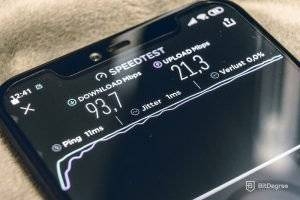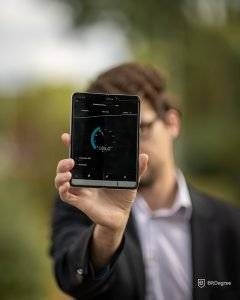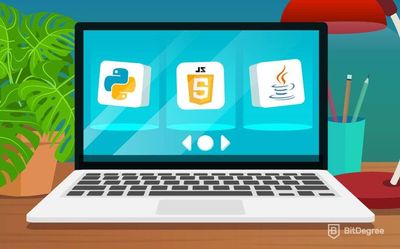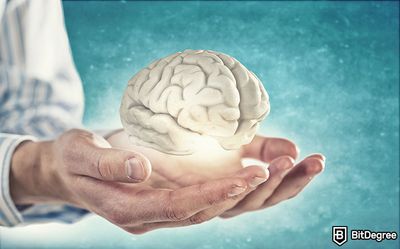Every new generation of the internet has brought us the benefits of its kind. The first kind of wireless network generation brought us the very first cellphones, allowing us to communicate between long distances. The second wireless network 2G allowed us to send a quick text message, and 3G allowed the cellphone users to connect to the internet immediately. Currently, most of us are using the 4G network, which has brought us the speed of the internet that we enjoy today. Although the speed of the fourth generation network seems like cutting-edge technology and might just enough to please a modern user’s needs. So what is the 5G network and why is it needed?
Having more and more devices connected to the wireless network is pushing the 4G network to the limit because it can provide online connectivity only to a certain amount of appliances. 5G network was created to provide much more digital bandwidth for the network and make it faster than ever before. It will be capable of storing up to thousand times more digital devices than the networks before 5G.
Users of today can connect almost every single device in their house to the internet. There is simply just not enough room for them to fit in the 4G network. Due to this reason, the 5G network will become the foundation layer for such leading-edge technologies like the internet of things, autonomic driving, virtual reality, and so on. But how exactly the 5G network is different from the others?
Table of Contents
What is 5G Network?
 One of the keynotes that should be taken into account while figuring out the 5G network, is that when it goes fully operational with full capacity - wired network connections will no longer be needed. Devices like HDTV, security systems, smart appliances, automatically controlled vehicles, and many more, will no longer need cables to deliver communications or other kinds of entertainment services.
One of the keynotes that should be taken into account while figuring out the 5G network, is that when it goes fully operational with full capacity - wired network connections will no longer be needed. Devices like HDTV, security systems, smart appliances, automatically controlled vehicles, and many more, will no longer need cables to deliver communications or other kinds of entertainment services.
Latest EXCLUSIVE 25% OFF Coupon Found:
EXCLUSIVE 25% OFF
On DataCamp Subscriptions
Follow the Datacamp promo code link & get an exclusive 25% OFF Datacamp subscriptions. Act now while the offer is still available!
While it is safe to say that this kind of connectivity is called a 5G network, it is not exactly correct to call it that way. All different generations of the internet have been called in different ways.
The fifth-generation wireless network is the latest iteration of cellular technology. It was engineered by the developers to enable even greater speed and responsiveness of the wireless network. If you are wondering what does it mean to make the internet you have even faster, imagine downloading files, not dozens of MB/s but dozens of GB/s. That’s a completely different experience, right? The latency is predicted to be less than a 1 MS or even lower for uses that require instant responsiveness.
To better understand what is 5G bringing to the table it is not enough to know that it only increases speeds, capacity, and latency. The fifth-generation network offers a lot of features like network slicing. This feature enables an opportunity for the network provider to create multiple virtual networks within a 5G system. The slicing of the network offers many great possibilities for its user. With the upcoming internet of things systems and autonomic cars, it will be possible to distribute network connectivity between all the appliances more precisely. For example, autonomic cars will need much more responsiveness rather than devices at home, and it will be possible due to network slicing.
The Foundations of 5G
 Although the playground of the fifth-generation network is still an uncommon ground for many scientists, there are a certain amount of brand new technologies that started to grow as the foundations of the 5G.
Although the playground of the fifth-generation network is still an uncommon ground for many scientists, there are a certain amount of brand new technologies that started to grow as the foundations of the 5G.
The main technologies that makeup to what is 5G network are:
Millimeter Waves
You are probably safe to say that the 5G network and Millimeter Waves can be used synonymously but there are still some key takeaways to know. Being just a single part of what the 5G technology will use, Millimeter Waves combined with ‘low band’ frequencies and ‘sub-6GHz’ will create a faster data speeds with a whole bunch of other benefits for the customers.
The term mmWaves itself refers to a certain part of the radio frequency spectrum that is between 24GHz and 100GHz. Both of these frequencies have one thing in common - their wavelength is very short. The goal that mmWaves technology is aiming at is to use the unused gap of the wave frequency to greatly increase the amount of bandwidth available in the network. The problem with the current 4G radio frequencies is that it is heavily congested with many other signals, and mmWaves aim to fix that. On the other hand, while Millimeter Waves can contribute to what is 5G network’s one of the main goals - a great increase of speed at data transfer, the distance of the transfer becomes a little shorter.
To summarize the frequencies, the lower ones can benefit in the increase of speed, while high-frequency increase distance but provide slower transfers. The reason why scientists chose the mmWaves in 5G technology is that it can cover smaller, densely populated areas, which will be one of the biggest benefits in many cities.
Small Cell
The other key technology that plays an important role in 5G technology is Small Cell. While the current traditional network infrastructure has a lot of limitations, 5G technology aims to highly increase them. That is an achievable task to do using Small Cell technology. It is a low power, short-range wireless transmission system, or base stations, that cover a small geographical location. It can also cover indoor or outdoor applications.
Small Cell base stations are capable of handling high data rates for individual users, and this technology will play a significant part in efficiently deliver high-speed mobile broadband and low latency applications. To have a better understanding of Small Cells and what is 5G, let’s take a look at three parts of the SC technology.
Femtocells. Is it a small mobile base station designed to provide extended coverage for enterprise and residential applications. Its goal is to solve the problem of the mobile operator’s reach for those who have poor signal strength in their location.
Picocells. A small cellular base station that is used to cover a small area. A good example of that is covering such places as offices, in-door stations, or other places that gather a lot of people under one roof.
Microcells. Compared to the femtocells and picocells, microcells are designed to be able to support a bigger amount of users. Due to its high transmission power, it can cover such places as cities, metro’s and make them ‘smart’.
Massive MIMO
 The third part of what is 5G is a Multiple-Input Multiple-Output, or otherwise, known as MIMO. It is a technology that concludes many layers but it also can be simply be described as simultaneous use of the same radio frequencies to transmit different signals. It means, that at the base stations, several antennas can be transmitting signals, and other several antennas can be receiving and dividing them simultaneously.
The third part of what is 5G is a Multiple-Input Multiple-Output, or otherwise, known as MIMO. It is a technology that concludes many layers but it also can be simply be described as simultaneous use of the same radio frequencies to transmit different signals. It means, that at the base stations, several antennas can be transmitting signals, and other several antennas can be receiving and dividing them simultaneously.
Standard MIMO networks tend to use from two to four antennas to transmit data and the same number to receive it. But while we are talking about the massive MIMO, it is important to know that this system can bear a lot bigger number of antennas than a simple one. By a bigger number, it means that instead of two or four, massive MIMO can increase the number of antennas by dozens.
At the base-stations, massive MIMO algorithms create the best possible transmission routes through the air to reach its user. It uses beamforming technology, which will be described shortly, and MU-MIMO, which expands the total capacity per base station by enabling communication with multiple devices using the same resources, and creating a virtually unified device side.

Did you know?
Have you ever wondered which online learning platforms are the best for your career?
Beamforming
Moving on with the technologies that add-up to what is 5G network, Beamforming is another crucial element to the process. It is a wireless technique that utilizes advanced antenna technologies in both mobile devices and networks’ base stations to focus a wireless signal in a specific direction, rather than sending it through a wide area. A good example of that is comparing a flashlight light with a laser-pointer. While flashlight lights a wide area of the room, the laser-pointed aims to a specific dot, just like Beamforming.
With a huge amount of antenna elements in the system, Beamforming can become a 3D version of the data transmitter. The 3D Beamforming can create vertical and horizontal beams and send them towards users, which will eventually result in the increase of the data rates and capacity for its users that can be located in various locations.

- Easy to use with a learn-by-doing approach
- Offers quality content
- Gamified in-browser coding experience
- Free certificates of completion
- Focused on data science skills
- Flexible learning timetable

- High-quality courses
- Nanodegree programs
- Student Career services
- Nanodegree programs
- Suitable for enterprises
- Paid certificates of completion

- A wide range of learning programs
- University-level courses
- Easy to navigate
- University-level courses
- Suitable for enterprises
- Verified certificates of completion
Full Duplex
The fifth foundation of what is 5G network is a Full Duplex operation. What scientists are trying to do in this technology, is to gain a transmission and reception in a single frequency channel to improve the attainable spectral efficiency. The main challenge that confronts scientists is that it is hard to find a way to mitigate the decrease in performance that is imposed by the self-interference.
Full Duplex is a complex of techniques like passive suppression, active analog cancellation, and active digital cancellation.
The Uses of 5G Network
 While the costs of fifth-generation network infrastructure can be tremendous, and customers have always shown a significant intolerance to increasing taxes, some technologies that are coming our way will have to have a 5G network as its basic ground. To prove the need for a 5G network, the telecommunication industry will have to find a way to demonstrate what is 5G capable instead of 4G.
While the costs of fifth-generation network infrastructure can be tremendous, and customers have always shown a significant intolerance to increasing taxes, some technologies that are coming our way will have to have a 5G network as its basic ground. To prove the need for a 5G network, the telecommunication industry will have to find a way to demonstrate what is 5G capable instead of 4G.
Let’s go over some examples of why the 5G will be crucial soon.
- Self-Driving Cars. Relying on the technology to increase safety in the roads may seem like not the best idea but having a near-zero latency in transmitting automobile data may mitigate many dangers of the roads. The 5G network will play a crucial role here because of its speed and all-round connectivity.
- Virtual and Augmented Reality. The transmission speed of the data in virtual or augmented reality will play an important role to provide a real-time sensory environment, that is believable to the user. To provide a smooth run of virtual and augmented reality experience, there will be needed a connection that can send data up to 5 GBs per second.
- Cloud Computing. The internet is more than just a place for content but also the facilitator of connectivity in wide-area networks. What is 5G offering is that cloud computing services will be able to get much closer to the user than it is now. This is similar to what Edge Computing is - bringing the servers closer to the customer, therefore minimizing latencies caused by distance. This could be an edge in competition between telecommunication services.
- Internet of Things. The upcoming revolution of the digital age will pop-off with the low-latency connectivity of the 5G network. Things like kitchen, security, home-cleaning and other appliances will come to life with the help of the newest generation network. The increase in efficiency will be seen in no-time. These machine-to-machine applications will enable scenarios where devices will take over in such activities and industries like manufacturing.
- Healthcare. The biggest goal of revolutionizing technology is always to make people’s life better, and healthcare is one of the most important issues. The low-latency connectivity of the 5G network will change the clinical treatment as we know. Rural location citizens will no longer need to relocate to bigger cities to receive proper healthcare. The newest network will enable the opportunity to receive real-time solutions and support from surgeons from all over the world.
Overview
There is no denying what is 5G going to benefit its users. Throughout the network evolution, each generation network brought us many possibilities and made our life more efficient, global, and more convenient. Although the 5G network is already here, the implementation and construction of it will take a while to reach the bigger part of the population.












